Clear Skin: 10 Proven Tips for a Healthy and Glowing Face
Achieving glowing skin is a goal for many, but it requires more than just a good moisturizer. A comprehensive healthy skin care routine, combined with lifestyle changes, can make a significant difference.
Having clear skin is not just about aesthetics; it's also a reflection of overall health. Factors such as diet, hydration, and stress levels play a crucial role in determining the health and appearance of your skin.
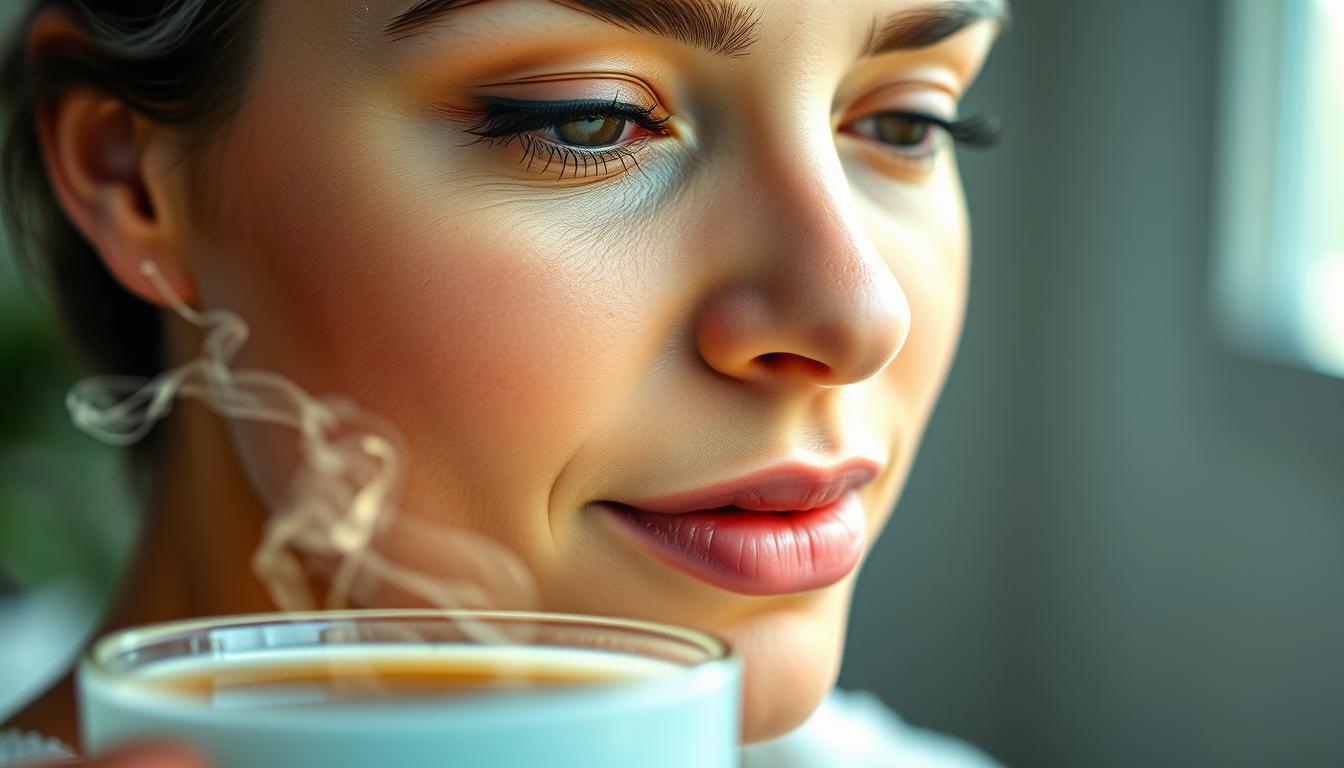
Clear Skin: 10 Proven Tips for a Healthy and Glowing Face
By following the right practices, you can achieve a radiant and healthy complexion. In this article, we will explore 10 proven tips to help you get started on your journey to glowing skin.
Key Takeaways
- Understand the importance of a comprehensive skin care routine.
- Learn how diet and hydration impact skin health.
- Discover the role of stress in skin appearance.
- Explore simple lifestyle changes for healthier skin.
- Get introduced to 10 proven tips for achieving glowing skin.
The Path to Healthy, Radiant Skin
Having clear skin is crucial for both physical and mental well-being. It's not just about looking good; it's about feeling confident and healthy in your own skin.
https://www.youtube.com/watch?v=f0AHTv71Dck
Why Clear Skin Matters Beyond Aesthetics
Clear skin is often associated with good health and beauty, but its importance extends far beyond aesthetics. Healthy skin care is essential for protecting the body from environmental stressors and preventing conditions like acne, hyperpigmentation, and premature aging. Moreover, having clear skin can significantly boost one's self-esteem and confidence, impacting various aspects of life, from personal relationships to professional success.
A robust skincare routine for clear skin involves understanding your skin type, addressing specific skin concerns, and adopting habits that promote overall skin health.
Setting Realistic Expectations for Your Skin Journey
Embarking on a journey to achieve clear skin requires patience and realistic expectations. It's essential to understand that everyone's skin is unique, and what works for one person may not work for another. Factors such as genetics, lifestyle, and environmental conditions play a significant role in determining skin health.
By setting achievable goals and being consistent with your skincare routine, you can make significant progress towards healthier, more radiant skin. It's also crucial to be aware of the products and treatments you're using, ensuring they are suitable for your skin type and concerns.
Understanding Your Skin Type and Concerns
Achieving healthy, glowing skin starts with understanding your skin type and addressing specific concerns. Your skin is as unique as you are, and what works for someone else may not work for you.
Identifying Your Skin Type: Dry, Oily, Combination, or Sensitive
Determining your skin type is the first step towards a tailored skincare routine. Dry skin tends to feel tight and flaky, while oily skin is characterized by a shiny complexion and enlarged pores. Combination skin mixes both dry and oily skin, typically with an oily T-zone. Sensitive skin reacts easily to products and environmental factors, often appearing red or irritated.
- Dry skin: Use gentle, hydrating products.
- Oily skin: Look for oil-control and non-comedogenic products.
- Combination skin: Balance products that control oil in some areas while hydrating others.
- Sensitive skin: Opt for fragrance-free and hypoallergenic products.
Common Skin Issues and Their Root Causes
Understanding common skin issues can help you address them effectively. Let's explore some prevalent concerns:
Acne and Breakouts
Acne occurs when pores are clogged with oil, dead skin cells, and bacteria. Factors like hormonal changes, stress, and improper skincare can exacerbate acne.
Hyperpigmentation and Dark Spots
Hyperpigmentation is caused by an overproduction of melanin, often triggered by sun exposure, inflammation, or hormonal changes. Using sunscreen and products with antioxidants can help mitigate this issue.
Texture and Pore Concerns
Enlarged pores and uneven texture can be due to genetics, aging, or clogged pores. Regular exfoliation and using products with salicylic acid or glycolic acid can improve skin texture.
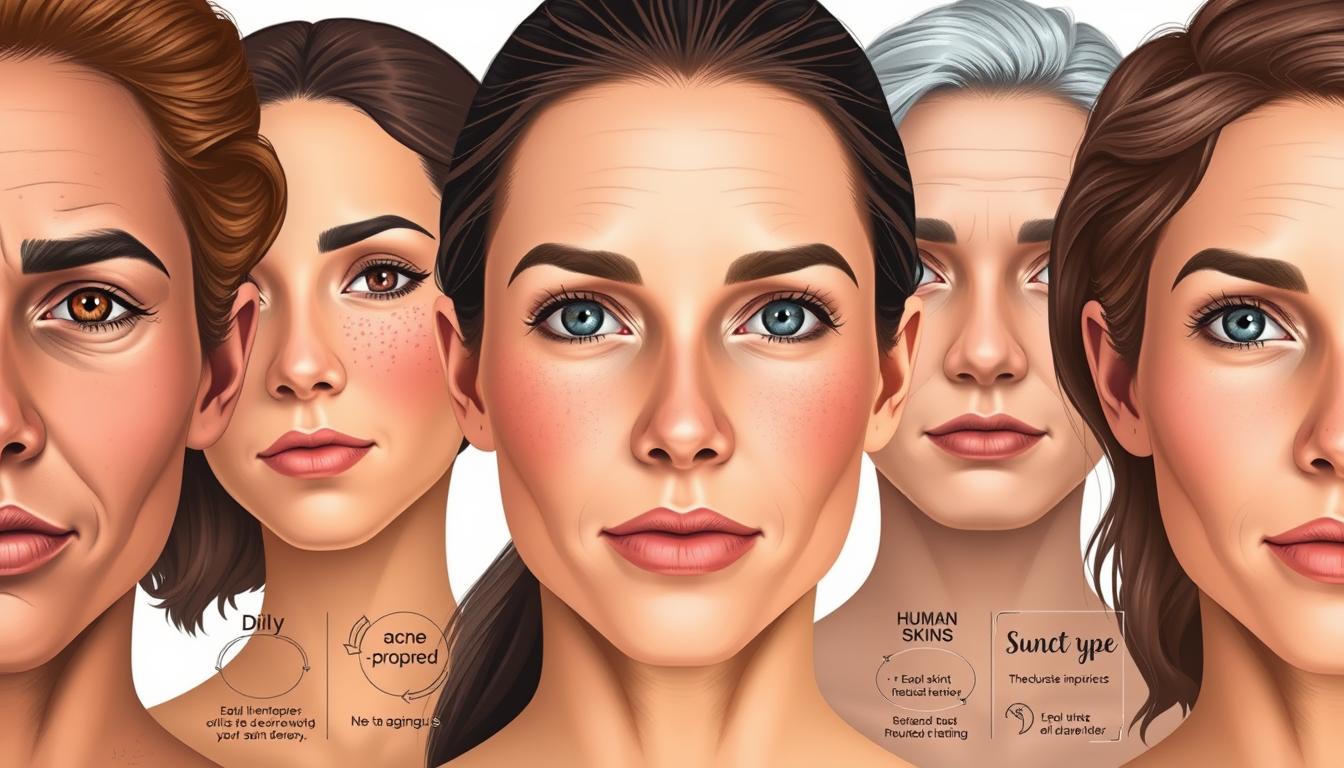
By understanding your skin type and addressing specific concerns, you can develop a more effective skincare routine. Whether you're dealing with acne, hyperpigmentation, or texture issues, there's a path forward to clearer, healthier skin.
The Science of Clear Skin: What Dermatologists Want You to Know
The quest for clear skin is backed by a wealth of scientific knowledge that dermatologists rely on. Understanding the intricacies of skin anatomy and the role of evidence-based ingredients can significantly enhance one's skincare routine.
Skin Anatomy and Barrier Function
The skin is the body's largest organ, serving as a protective barrier against external factors such as pollution, UV radiation, and pathogens. Its outermost layer, the stratum corneum, plays a crucial role in maintaining hydration and defending against environmental stressors. A compromised skin barrier can lead to issues like dryness, irritation, and increased susceptibility to damage.
https://www.youtube.com/watch?v=TnCOZ7KZUkI
Evidence-Based Ingredients That Transform Skin
Dermatologists often recommend products containing specific ingredients that have been proven to improve skin health. These include:
Retinoids and Vitamin A Derivatives
Retinoids, derived from vitamin A, are renowned for their ability to promote cell turnover, reduce the appearance of fine lines, and combat acne. They work by preventing clogged pores and enhancing collagen production.
Alpha and Beta Hydroxy Acids
Alpha hydroxy acids (AHAs) and beta hydroxy acids (BHAs) are chemical exfoliants that help remove dead skin cells, revealing smoother skin. AHAs, such as glycolic acid, are effective for surface-level exfoliation, while BHAs, like salicylic acid, penetrate deeper into pores to unclog them.
Antioxidants and Peptides
Antioxidants neutralize free radicals, thereby protecting the skin from oxidative stress and environmental damage. Peptides, short chains of amino acids, can stimulate collagen production, improving skin elasticity and firmness.
By incorporating products with these evidence-based ingredients into their skincare routine, individuals can significantly improve the health and appearance of their skin, moving closer to achieving clear, radiant skin.
Tip1: Master the Art of Proper Cleansing
Mastering the art of proper cleansing is the cornerstone of any effective skincare routine. It's the initial step that sets the stage for your skin's health and appearance throughout the day and night.
Morning vs. Evening Cleansing Protocols
Cleansing protocols can vary significantly between morning and evening due to the different needs of your skin at these times. In the morning, a gentle cleanse is recommended to remove overnight impurities without stripping the skin of its natural oils. This helps in maintaining the skin's natural barrier.
In the evening, a more thorough cleanse is necessary to remove dirt, pollution, and makeup that accumulates on the skin throughout the day. This is crucial for preventing clogged pores and maintaining clear skin.
Selecting the Ideal Cleanser for Your Specific Needs
Choosing the right cleanser depends on your skin type and specific concerns. For those with sensitive skin, a gentle, fragrance-free cleanser is often the best choice to avoid irritation.
Gentle Cleansers for Sensitive Skin
Gentle cleansers are formulated to clean the skin without causing irritation or dryness. They are ideal for sensitive skin types and are often fragrance-free and hypoallergenic.
Foaming Options for Oily Complexions
Foaming cleansers are excellent for oily skin as they help to deep clean pores and reduce oiliness. Ingredients like salicylic acid can enhance their effectiveness.
Balms and Oils for Makeup Removal
Cleansing balms and oils are effective for removing makeup, including waterproof formulas. They work by dissolving makeup, making it easy to wipe away without harsh rubbing.

By understanding your skin's needs and selecting the appropriate cleansing products, you can significantly improve your skin's health and appearance. Whether you're dealing with dryness, oiliness, or sensitivity, there's a cleansing solution tailored to your specific skin concerns.
Tip2: Strategic Exfoliation for Cell Renewal
Exfoliating strategically can make a significant difference in your skincare journey, promoting healthier and more radiant skin. Exfoliation is the process of removing dead skin cells from the surface of the skin, which can help improve skin texture and appearance.
https://www.youtube.com/watch?v=YMaW39k64YU
Chemical Exfoliants: AHAs, BHAs, and PHAs
Chemical exfoliants are products that contain alpha-hydroxy acids (AHAs), beta-hydroxy acids (BHAs), or polyhydroxy acids (PHAs), which dissolve the 'glue' that holds dead skin cells together, allowing for a gentler and often more effective exfoliation.
Key benefits of chemical exfoliants include:
- Improved skin texture
- Reduced appearance of fine lines and wrinkles
- Enhanced skin brightness
Physical Exfoliation: When and How to Use Scrubs
Physical exfoliants, such as scrubs, brushes, or sponges, manually remove dead skin cells. The frequency and method of physical exfoliation depend on your skin type and concerns.
For sensitive skin, gentle, chemical-based exfoliants may be more suitable, while oily skin may benefit from more frequent exfoliation using either chemical or physical methods.
Exfoliation Frequency by Skin Type
| Skin Type | Recommended Exfoliation Frequency |
|---|---|
| Dry/Sensitive | 1-2 times per week |
| Normal/Combination | 2-3 times per week |
| Oily | 3-4 times per week |
Signs of Over-Exfoliation to Watch For
Over-exfoliation can lead to irritation, dryness, and increased sensitivity. Signs include redness, itching, and a burning sensation. If you experience these symptoms, reduce the frequency of exfoliation or switch to a gentler method.
To avoid over-exfoliation:
- Start with a low frequency and gradually increase as needed
- Monitor your skin's response
- Adjust your exfoliation routine accordingly
Tip3: Hydration Strategies for Clear Skin
For skin that's truly radiant, hydration strategies are key, encompassing both internal and topical approaches. Effective hydration is foundational to maintaining healthy, clear skin.
Internal Hydration: Water Intake and Skin Health
Drinking enough water is crucial for skin health, as it helps to maintain the skin's elasticity and suppleness. Adequate hydration supports the skin's natural barrier function, enhancing its ability to retain moisture and protect against environmental stressors.
The recommended daily water intake varies, but a common guideline is to drink at least eight glasses of water a day. However, individual needs may differ based on activity level, climate, and overall health.
Topical Hydrators: Humectants, Emollients, and Occlusives
Topical hydration involves using products that contain humectants, emollients, and occlusives. Humectants, such as hyaluronic acid and glycerin, attract moisture from the air to the skin, while emollients fill gaps between skin cells, making the skin feel smooth. Occlusives, like petrolatum, create a physical barrier on the skin's surface, preventing moisture loss.
Hyaluronic Acid and Glycerin Benefits
Hyaluronic acid and glycerin are renowned for their ability to retain moisture. Hyaluronic acid can hold up to 1000 times its weight in water, making it an excellent humectant. Glycerin helps to maintain the skin's moisture barrier, reducing the appearance of fine lines and wrinkles.
Non-Comedogenic Moisturizers
For those with acne-prone skin, non-comedogenic moisturizers are a good choice. These products are formulated not to clog pores, providing hydration without exacerbating acne. Look for products labeled "non-comedogenic" or "oil-free" to ensure they meet your skin's needs.
| Hydrator Type | Function | Examples |
|---|---|---|
| Humectants | Attract moisture | Hyaluronic Acid, Glycerin |
| Emollients | Fill skin cell gaps | Ceramides, Fatty Acids |
| Occlusives | Prevent moisture loss | Petrolatum, Dimethicone |

Tip4: Targeted Treatments That Deliver Results
The path to a flawless complexion involves leveraging targeted treatments that tackle immediate concerns and foster long-term clarity. Targeted treatments are products or therapies designed to address specific skin issues, such as acne, hyperpigmentation, or fine lines.
Spot Treatments for Immediate Concerns
Spot treatments are formulated to address specific skin issues. For instance, products containing salicylic acid or benzoyl peroxide can help reduce acne by unclogging pores and killing bacteria. When using spot treatments, it's crucial to follow the product instructions and start with a lower concentration to avoid irritation.
Effective spot treatment ingredients include:
- Salicylic acid for exfoliating and unclogging pores
- Benzoyl peroxide for its antibacterial properties
- Hydrocortisone for reducing inflammation
Serums and Ampoules for Long-Term Clarity
Serums and ampoules are concentrated products that deliver active ingredients deep into the skin. They are designed to address various skin concerns, from hydration and brightening to anti-aging.
Niacinamide for Pore Refinement
Niacinamide is a versatile ingredient that improves skin elasticity, enhances skin brightness, and reduces inflammation. It is particularly effective in minimizing pore appearance and regulating sebum production.
Vitamin C for Brightening
Vitamin C is a potent antioxidant that brightens the skin, evens out skin tone, and protects against environmental stressors. It is essential for collagen production and can help reduce the appearance of fine lines and wrinkles.
Azelaic Acid for Redness and Inflammation
Azelaic acid is a naturally occurring compound that has antibacterial properties, making it effective against acne. It also reduces redness and inflammation, promoting a more even skin tone.
As dermatologist Dr. Joshua Zeichner notes, "Using a serum with niacinamide can help improve the overall appearance of the skin by reducing pore size and improving skin elasticity."
"The right serum can make a significant difference in your skin's appearance. Look for products with clinically-tested ingredients."
| Ingredient | Benefits |
|---|---|
| Niacinamide | Pore refinement, improved skin elasticity |
| Vitamin C | Brightening, antioxidant protection |
| Azelaic Acid | Redness reduction, antibacterial properties |
https://www.youtube.com/watch?v=8C2IAiqSwYs
By incorporating these targeted treatments into your skincare routine, you can address specific skin concerns and achieve a clearer, more radiant complexion over time.
Tip5: Sun Protection: The Non-Negotiable Step
Sun protection is not just a recommendation; it's a necessity for clear skin. The harmful effects of UV radiation on the skin are well-documented, leading to premature aging, hyperpigmentation, and even skin cancer. Incorporating sun protection into your daily skincare routine is crucial for maintaining healthy, radiant skin.
Daily SPF Application and Reapplication Techniques
Applying the right amount of SPF daily is vital. Dermatologists recommend using a broad-spectrum sunscreen with an SPF of at least 30. It's essential to apply sunscreen 15-30 minutes before going outdoors and to reapply every two hours or immediately after swimming or sweating. Don't forget often-overlooked areas like the tops of your ears, nose, and the back of your neck.
For optimal protection, use enough sunscreen to cover all exposed skin. A general rule of thumb is to use about one ounce (a shot glass full) for the entire body. For the face, a nickel-sized amount is sufficient. Make sure to apply it evenly and gently massage it into the skin until fully absorbed.
Physical vs. Chemical Sunscreens: Choosing What's Right for You
Sunscreens come in two main types: physical and chemical. Physical sunscreens work by creating a physical barrier on the skin's surface that reflects UV rays, while chemical sunscreens absorb UV radiation and convert it into heat, which is then released from the skin.
Physical sunscreens, containing zinc oxide or titanium dioxide, are often recommended for sensitive skin or for use on children because they are less likely to cause irritation. Chemical sunscreens, on the other hand, can be more cosmetically elegant and are often preferred for daily use under makeup.
Sun Protection Beyond the Face
While it's easy to remember to protect your face, it's equally important to protect other areas exposed to the sun. This includes your hands, arms, and the back of your neck. Wear protective clothing, seek shade, and apply sunscreen liberally to these areas.
Sunscreen Myths Debunked
There are several myths surrounding sunscreen use. One common myth is that you don't need sunscreen on cloudy days. However, UV rays can penetrate through clouds, making daily sunscreen use essential regardless of the weather. Another myth is that higher SPF values offer significantly greater protection. While higher SPF provides more protection, the difference between SPF 50 and SPF 100 is not as significant as it seems, and no sunscreen provides 100% protection.
| Sunscreen Type | Active Ingredients | Benefits |
|---|---|---|
| Physical | Zinc Oxide, Titanium Dioxide | Immediate protection, less irritating |
| Chemical | Various (e.g., oxybenzone, avobenzone) | Cosmetically elegant, suitable for daily use |
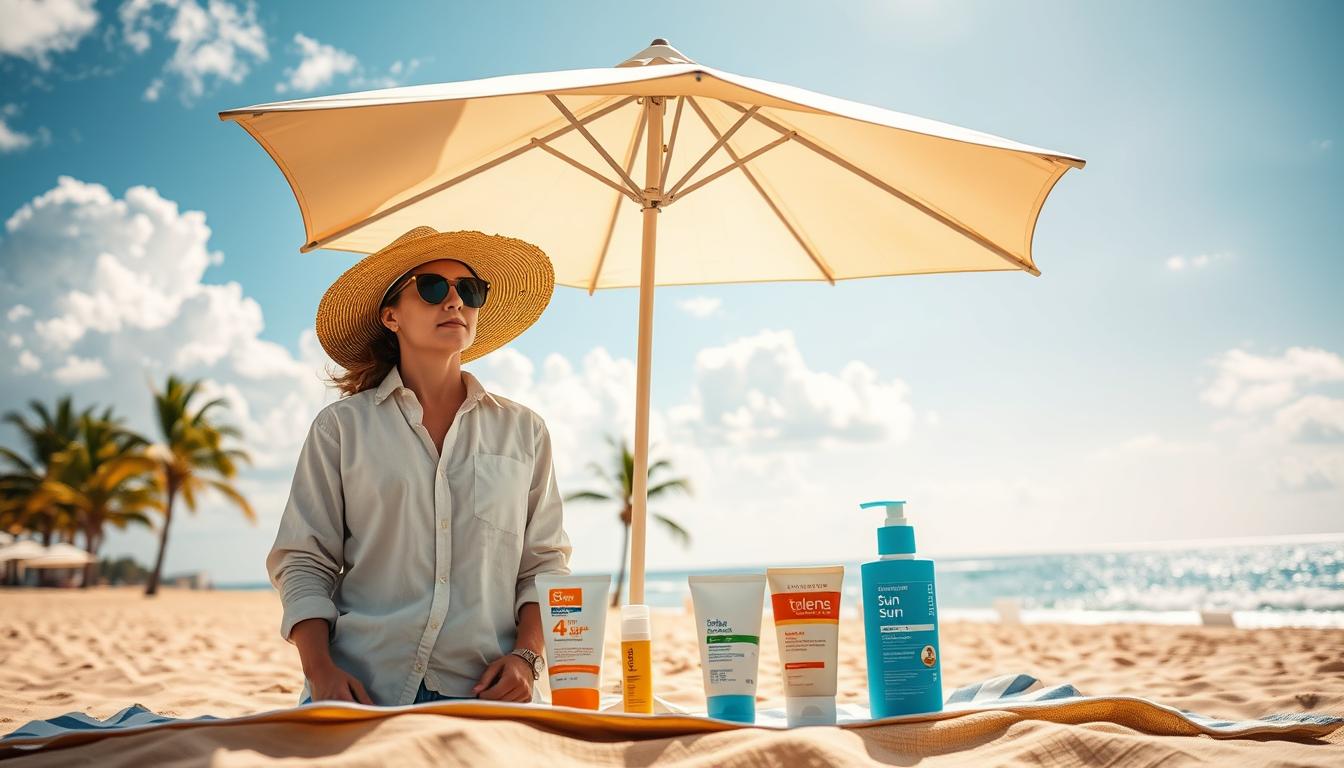
Tip6: Nutrition and Diet for Skin Health
The food we eat has a significant impact on our skin's health and appearance. A diet rich in essential nutrients can help support skin health, while a diet lacking in these nutrients can lead to various skin issues.
Skin-Supporting Nutrients and Where to Find Them
A well-balanced diet that includes a variety of whole foods can provide the necessary nutrients for healthy skin. Vitamin C, found in citrus fruits and leafy greens, is crucial for collagen production. Omega-3 fatty acids, found in fatty fish and nuts, help reduce inflammation. Foods rich in antioxidants, such as berries and green tea, protect the skin from environmental stressors.
Foods That May Trigger Inflammation and Breakouts
Certain foods can trigger inflammation and lead to breakouts. Understanding these dietary triggers can help in managing skin health.
The Dairy and Acne Connection
Dairy products have been linked to acne in some individuals. The hormones present in dairy products can stimulate oil production and lead to clogged pores.
Sugar's Impact on Collagen
Consuming high amounts of sugar can lead to glycation, a process that damages collagen and elastin, resulting in premature aging.
Omega-3 Fatty Acids and Skin Barrier Support
Omega-3 fatty acids play a crucial role in maintaining the skin's barrier function. They help reduce inflammation and promote healthy skin.
https://www.youtube.com/watch?v=dAkJ-9txlqM
Incorporating a balanced diet rich in skin-supporting nutrients and minimizing foods that trigger inflammation can significantly improve skin health. By making informed dietary choices, individuals can support their skin care efforts and achieve healthier, more radiant skin.
Tip7: Stress Management for Hormonal Balance
Managing stress is crucial for maintaining hormonal balance, which in turn affects the health and appearance of your skin. Chronic stress can lead to hormonal imbalances that may cause skin issues such as acne, rosacea, and eczema.
The Cortisol-Skin Connection
Cortisol, often referred to as the "stress hormone," plays a significant role in the body's response to stress. Elevated cortisol levels can lead to increased oil production in the skin, potentially clogging pores and causing acne. Moreover, cortisol can weaken the skin's barrier function, making it more susceptible to irritation and inflammation.
Practical Stress-Reduction Techniques for Busy Lives
Incorporating stress-reduction techniques into your daily routine can help mitigate the negative effects of stress on your skin. Two effective methods include mindfulness practices and exercise.
Mindfulness Practices
Mindfulness practices, such as meditation and deep breathing exercises, can help reduce stress levels by promoting relaxation and improving emotional regulation. Regular mindfulness practice has been shown to decrease cortisol levels, contributing to a more balanced hormonal state and healthier skin.
Exercise for Stress Relief and Circulation
Exercise is another powerful tool for managing stress. Physical activity not only reduces cortisol levels but also improves circulation, which can help nourish the skin. Activities such as yoga, walking, and jogging are excellent options for stress relief.
| Stress-Reduction Technique | Benefits for Skin Health |
|---|---|
| Mindfulness Practices | Reduces cortisol levels, promotes relaxation |
| Exercise | Improves circulation, reduces cortisol |

Tip8: Optimize Sleep for Skin Regeneration
Quality sleep is the unsung hero of skincare, working behind the scenes to regenerate and repair skin. During sleep, the body repairs and regenerates damaged cells, builds bone and muscle, and strengthens the immune system. For skin health, this means that sleep plays a critical role in its regeneration and overall appearance.
The Science of Overnight Skin Repair
While we sleep, our skin undergoes a natural repair process. The body's natural circadian rhythm dictates that during the night, skin cells regenerate faster, and the skin's barrier function is restored. This process is crucial for maintaining healthy, resilient skin that looks radiant and feels smooth.
The science behind overnight skin repair is rooted in the body's natural production of certain hormones and growth factors during sleep. For instance, the production of growth hormone, which is pivotal for tissue repair and regeneration, peaks during deep sleep. Understanding this process highlights the importance of uninterrupted, quality sleep for optimal skin health.
Creating a Sleep Environment for Maximum Skin Benefits
To maximize the skin benefits of sleep, it's essential to create a sleep-conducive environment. This involves more than just getting into bed; it's about setting the stage for quality sleep that allows your skin to regenerate effectively.
Silk Pillowcases and Skin
One often-overlooked aspect of sleep environment is the material of your pillowcase. Silk pillowcases are recommended for skin health because they are gentle on the skin, reducing friction that can lead to wrinkles and skin irritation. Unlike cotton, silk doesn't absorb moisture from the skin, helping to keep the skin hydrated throughout the night.
Pre-Sleep Skincare Rituals
Establishing a pre-sleep skincare ritual can significantly enhance the skin regeneration process. This involves cleansing the skin thoroughly, applying any necessary treatments or serums, and moisturizing to lock in hydration. A consistent pre-sleep routine signals to the skin that it's time to repair and regenerate, maximizing the benefits of sleep for skin health.

By optimizing sleep and creating a conducive sleep environment, individuals can significantly improve their skin's health and appearance. This involves not just the quantity of sleep but also the quality, making every aspect of the sleep experience count towards achieving radiant, healthy skin.
Tip9: Environmental Protection Strategies
Protecting our skin from environmental aggressors is crucial for maintaining a healthy and glowing complexion. Our skin is constantly exposed to various stressors, including pollution, UV radiation, and extreme weather conditions, which can lead to premature aging and skin damage.
Defending Against Pollution and Free Radical Damage
Pollution is a significant environmental factor that can affect skin health. It can lead to the formation of free radicals, which damage skin cells and accelerate aging. Antioxidants play a crucial role in neutralizing these free radicals, thereby protecting the skin.
Antioxidants: Your Skin's Environmental Shield
Antioxidants are substances that can prevent or slow damage to cells caused by free radicals. They are found in various skincare products and foods. Some key antioxidants include Vitamin C, Vitamin E, and ferulic acid.
Indoor Air Quality and Skin
Indoor air quality is often overlooked but can significantly impact skin health. Using air purifiers and maintaining good ventilation can help reduce exposure to indoor pollutants.
Protective Skincare Ingredients
Certain skincare ingredients offer protection against environmental stressors. These include:
- Antioxidant serums that contain ingredients like Vitamin C and ferulic acid.
- Products with niacinamide, which can improve skin's barrier function.
- Sunscreens that provide broad-spectrum protection against UV radiation.

By incorporating these strategies into your skincare routine, you can better protect your skin against environmental stressors and maintain a healthier, more radiant complexion.
Tip10: Consistency and Patience: The Clear Skin Marathon
The path to clear skin is not a sprint, but a marathon that demands consistent effort and patience. Achieving and maintaining healthy, radiant skin requires a long-term commitment to a well-structured skincare routine.
Creating Sustainable Skincare Habits
To develop sustainable skincare habits, it's essential to start with small, manageable steps. Begin by identifying your skin type and concerns, then choose products that are suitable for your needs. Gradually build up your routine, incorporating products that address your specific skin issues.
Consistency is key; using products sporadically can lead to inconsistent results. Make skincare a part of your daily routine, just like brushing your teeth or taking a shower.
Tracking Progress and Adjusting Your Approach
Tracking your progress is vital to understanding what works and what doesn't in your skincare routine. This is where skin journaling comes into play.
Skin Journaling Methods
Keeping a skin journal involves recording your daily skincare activities, including products used, any changes in your skin, and notes on how you feel. This can help you identify patterns and potential triggers for skin issues.
- Document your daily skincare routine.
- Note any changes in your skin, whether positive or negative.
- Record any factors that could influence your skin, such as diet, stress levels, or environmental conditions.
When to Expect Results from Different Treatments
Understanding when to expect results from your skincare treatments is crucial for maintaining motivation and adjusting your routine as needed. Different treatments have varying timelines for effectiveness.
| Treatment Type | Expected Timeline |
|---|---|
| Cleansing and moisturizing | Immediate to short-term (1-4 weeks) |
| Exfoliation and spot treatments | Short-term (4-8 weeks) |
| Serums and ampoules | Medium-term (8-12 weeks) |
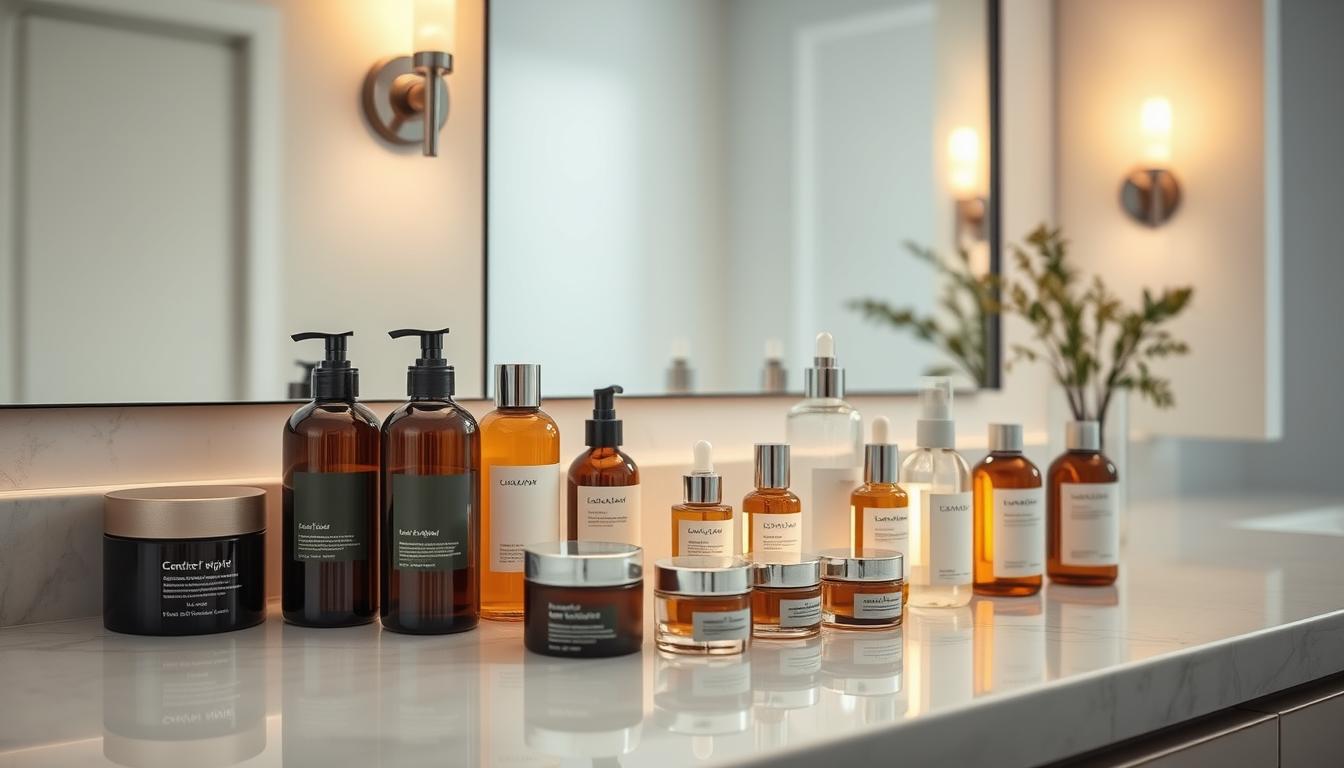
By combining consistency in your skincare routine with patience and a well-informed approach, you can achieve the clear, healthy skin you desire. Remember, it's a marathon, not a sprint.
Professional Treatments for Stubborn Skin Concerns
For individuals struggling with persistent skin issues, professional treatments can be a game-changer. While a consistent skincare routine is essential, some skin concerns require more advanced solutions.
In-Office Procedures with Proven Efficacy
In-office procedures offer a range of benefits for those dealing with stubborn skin concerns. These treatments are performed by professionals who can tailor the procedure to the individual's skin type and concerns.
- Chemical Peels: A solution for various skin issues, including hyperpigmentation and fine lines.
- Microdermabrasion: A non-invasive exfoliating treatment that improves skin texture.
Chemical Peels and Microdermabrasion
Chemical peels involve applying a solution to remove the top layers of the skin, revealing smoother skin. Microdermabrasion, on the other hand, uses fine crystals to exfoliate the skin gently.
When to Consult a Dermatologist vs. Aesthetician
Understanding whether to consult a dermatologist or an aesthetician is crucial. Dermatologists are medical professionals who can diagnose and treat skin conditions, while aestheticians provide treatments focused on skin health and appearance.
- Laser and Light Therapies: Treatments that use advanced technology to address various skin concerns, including hair removal and skin rejuvenation.
- Prescription-Strength Solutions: For severe skin issues, dermatologists can provide prescription-strength treatments that are not available over-the-counter.
Laser and Light Therapies
Laser and light therapies are versatile treatments that can be used for a range of skin concerns, from removing unwanted hair to reducing the appearance of fine lines and wrinkles.
Prescription-Strength Solutions
For more severe skin issues, prescription-strength solutions can offer significant benefits. These treatments are available only through a dermatologist.
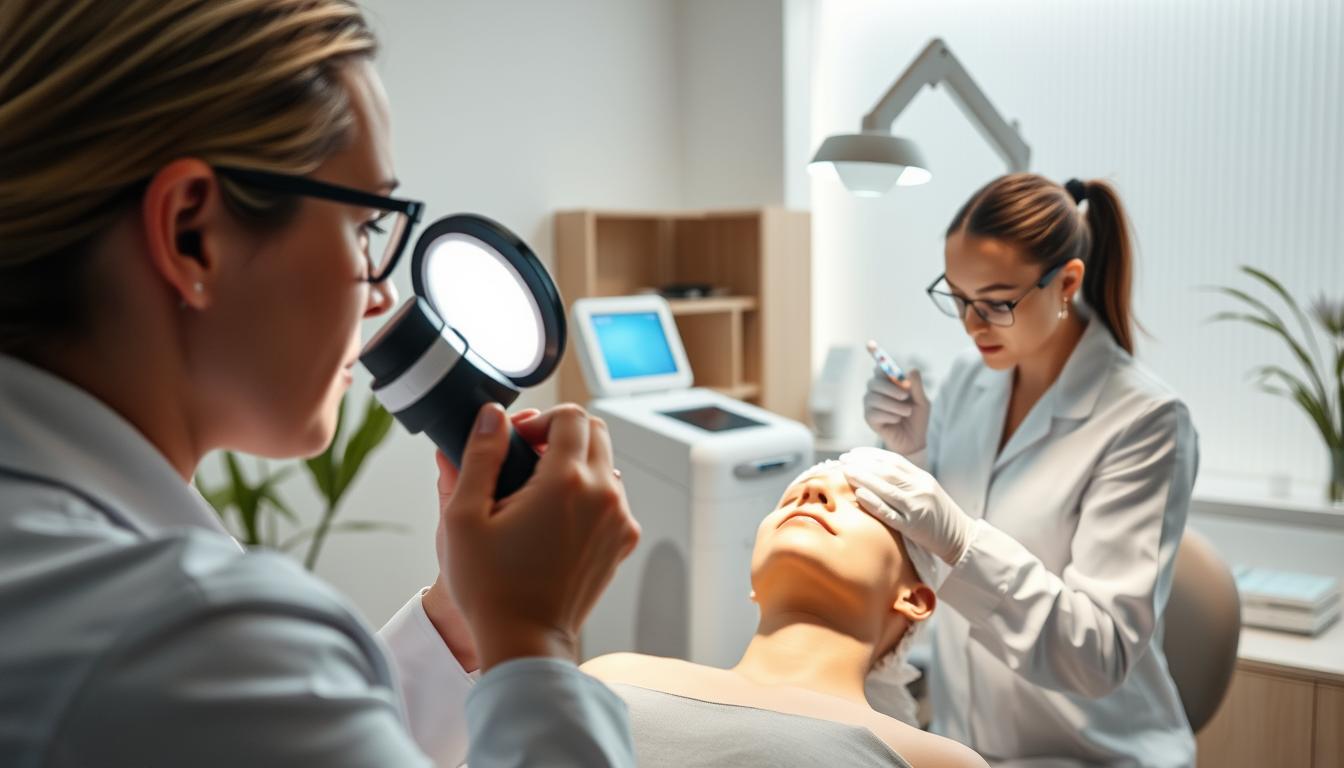
Building Your Personalized Clear Skin Routine
Creating a personalized clear skin routine is the key to achieving a healthy and glowing complexion. By understanding your skin type and concerns, you can tailor a regimen that addresses your unique needs.
Morning Routine Blueprint by Skin Type
A morning skincare routine sets the tone for the day. For dry skin, start with a gentle cleanser, followed by a hydrating toner, and finish with a moisturizing sunscreen. For oily skin, use a oil-free cleanser, a salicylic acid toner, and a lightweight moisturizer with SPF.
| Skin Type | Morning Routine |
|---|---|
| Dry | Cleanser, Hydrating Toner, Moisturizing Sunscreen |
| Oily | Oil-Free Cleanser, Salicylic Acid Toner, Lightweight Moisturizer with SPF |
| Combination | Balancing Cleanser, Toner, Moisturizer with SPF |
Evening Routine Blueprint by Skin Type
The evening routine focuses on repair and rejuvenation. For sensitive skin, use a fragrance-free cleanser, a soothing toner, and a nourishing night cream. For normal skin, double-cleanse with a gentle oil-based cleanser followed by a foaming cleanser, then apply a toner and a moisturizer.
As the seasons change, so should your skincare routine. In winter, focus on hydration and protection. In summer, emphasize sun protection and oil control.
Budget-Friendly vs. Luxury Options
When choosing products, consider both budget-friendly and luxury options. While luxury products may offer advanced formulations, budget-friendly options can be just as effective. Look for products with proven ingredients, regardless of price.
Conclusion: Your Lifelong Journey to Radiant Skin
Achieving clear skin is not a one-time accomplishment, but a lifelong journey that requires dedication, patience, and persistence. By following the 10 proven tips outlined in this article, you can set yourself on the path to radiant, healthy-looking skin that glows from within.
Remember, clear skin is not just about aesthetics; it's also a reflection of your overall health and well-being. As you continue on your skincare journey, stay committed to your routine, and be gentle with your skin. With time, effort, and the right strategies, you can enjoy the benefits of radiant skin that boosts your confidence and enhances your quality of life.
Embracing this lifelong journey to clear skin means being proactive about your skin health, staying informed, and adapting to changes as needed. By doing so, you'll be well on your way to maintaining a healthy, glowing complexion that radiates beauty and vitality.
FAQ
What is the best skincare routine for clear skin?
The best skincare routine for clear skin involves a combination of proper cleansing, exfoliation, hydration, and sun protection. It's essential to identify your skin type and concerns to tailor a routine that suits your needs.
How can I get clear skin naturally?
To achieve clear skin naturally, focus on maintaining a balanced diet rich in fruits, vegetables, and omega-3 fatty acids, staying hydrated, managing stress, and getting adequate sleep. Using natural skincare products and protecting your skin from the sun are also crucial.
What are the most effective ingredients for achieving clear skin?
Effective ingredients for clear skin include retinoids, alpha and beta hydroxy acids, antioxidants, and peptides. Niacinamide, vitamin C, and azelaic acid are also beneficial for addressing specific skin concerns like hyperpigmentation and inflammation.
How often should I exfoliate for clear skin?
Exfoliation frequency depends on your skin type. Generally, exfoliating one to three times a week is recommended. Over-exfoliating can lead to irritation, so it's crucial to find a balance that works for your skin.
Can diet really impact my skin's clarity?
Yes, diet plays a significant role in skin health. Consuming foods high in sugar, dairy, and processed ingredients can trigger inflammation and breakouts. A diet rich in antioxidants, vitamins, and minerals supports skin clarity.
How does stress affect my skin?
Stress can lead to hormonal imbalances, which may cause skin issues like acne, rosacea, and eczema. Practicing stress-reduction techniques such as mindfulness, exercise, and meditation can help mitigate these effects.
Is it necessary to use sunscreen daily for clear skin?
Yes, using sunscreen daily is crucial for clear skin. UV exposure can lead to hyperpigmentation, premature aging, and skin damage. Choose a broad-spectrum sunscreen with at least SPF 30 and apply it as part of your morning skincare routine.
How can I manage hormonal acne?
Managing hormonal acne involves a combination of proper skincare, lifestyle changes, and potentially, professional treatments. Using products containing salicylic acid or benzoyl peroxide, maintaining a balanced diet, and managing stress can help.
What role does sleep play in achieving clear skin?
Sleep is essential for skin regeneration and repair. During sleep, your skin undergoes processes that help to clear out toxins and regenerate cells. Aim for 7-9 hours of sleep per night to support skin health.
Can professional treatments help with stubborn skin concerns?
Yes, professional treatments like chemical peels, microdermabrasion, laser, and light therapies can be highly effective for addressing stubborn skin concerns. Consulting with a dermatologist or aesthetician can help determine the best course of treatment for your specific skin issues.
